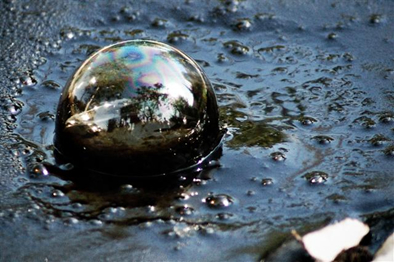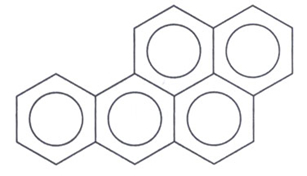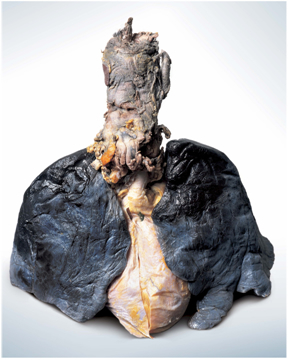O tar is a thick black liquid with a strong smell. The denominated coal tar is one of the three fractions resulting from the distillation of coal, being one complex mixture of aromatic compounds. When going through a fractional distillation process, coal tar gives rise to five fractions (light oil, medium oil, heavy oil, anthracene oil and pitch) that have a high commercial value.

Tar is actually a mixture of more than 4000 substances. Among them, the main ones are the HPAs, that is, polycyclic aromatic hydrocarbons, constituents of a family of compounds characterized by having two or more condensed rings.
Many of these are proven carcinogens, which means that they cause changes in the genes of cells committed to cell division. One of the most powerful HPAs is the benzopyrene, whose structural formula is:

To get an idea of how dangerous benzopyrene and other aromatics can be, they can cause cancer. in guinea pigs (rats) through the simple contact of a region of the animal's body, without hair, with a layer of the compound.
In addition to PAHs, the other substances that make up tar are phenols, cresols, non-volatile nitrosamines, metal ions and even radioactive compounds, such as polonium 210. Among the tar components, at least sixty are cancerous, such as arsenic, cadmium and nickel metal ions.
Tar is mainly found in the tobacco smoke and therefore is present in the cigarette and in your smoke.Thus, it can be the factor that relates the smoking habit with the lung, laryngeal and mouth cancer. Studies prove that the substances present in cigarettes cause mutations, that is, changes in the genetic material of cells in the genes that control cell division. With this, there is an uncontrolled multiplication of cells, which leads to the formation of tumors.
The tar is partly retained in the cigarette filter and partly impregnated in the smoker's lungs.

By Jennifer Fogaça
graduated in chemistry
